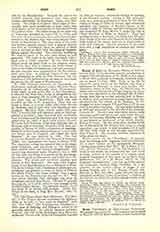

Bonn, UNIVERSITY OF (RHEINISCHE FRIEDRICH-WILHELMS-UNIVERSITAT). An academy was founded at Bonn in 1777 by Max Friedrich, Prince-Archbishop of Cologne. To secure its support he ordered that every monastery and convent within the archdiocese should either provide two professors or contribute a certain sum of money. He also endeavored to obtain the papal sanction, but failed. In 1784 Kaiser Joseph II raised the academy to the rank of a university, and the inauguration took place November 20, 1786. In this first period the university suffered from Febronianism and Rationalism. The leaders were Hedderich (1744-1808), Dereser (1757-1827), and Schneider (1756-94). Pius VI in a Brief of March 24, 1790, called the archbishop’s attention to the deplorable condition of the university, but without result. In 1794 the French invasion obliged the professors to suspend their courses, and in 1797 the university was closed. It was restored in 1818 by King Friedrich Wilhelm III. Among its professors of theology were George Hermes (1775-1831), Achterfeldt (1788-1879), and Braun (1801-63), originators of the movement known as Hermesianism. Some of their followers, e.g. Elverich (1796-1886), joined the “Old Catholics“, a party which also had as adherents Reusch (1825-1900) and several other members of the faculty. Their action led finally to their suspension and excommunication after having created a division among both professors and students of theology. The other departments of the university developed rapidly under the direction of Niebuhr (1776-1831) and Arndt (1769-1860) in history, A. W. Schlegel (1767-1845) in literature, Nasse (1778-1851) in medicine, Kekule (1829-96) and Mohr (1806-79) in chemistry, Clausius (1822-88) in physics, Von Rath (1830-88) in mineralogy, Preyer (1841-97) and Pfluger (1829-) in physiology. Since 1868 new buildings have been provided for the scientific departments either in Bonn or in Pappelsdorf. The university comprises at present the Catholic faculty of theology, the Protestant faculty of theology, and the faculties of law, medicine, and philosophy. There are 284 instructors and 3488 students. In 1905-06, the Catholic faculty of theology had 309 students, the Protestant 80. The library contains 350,000 volumes.
E. A. PACE

